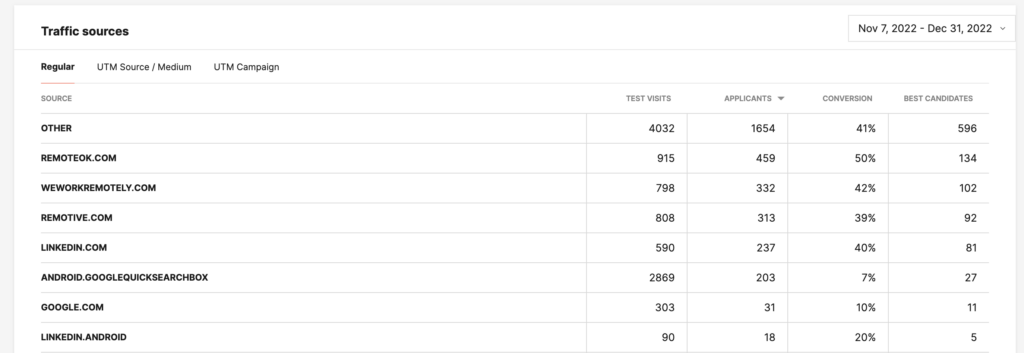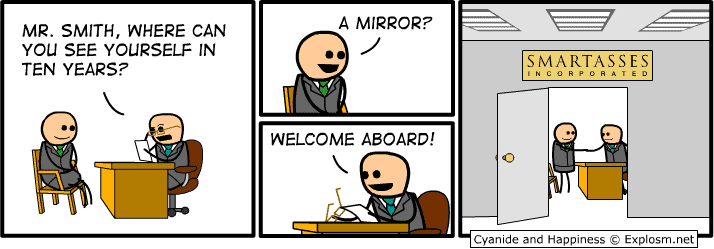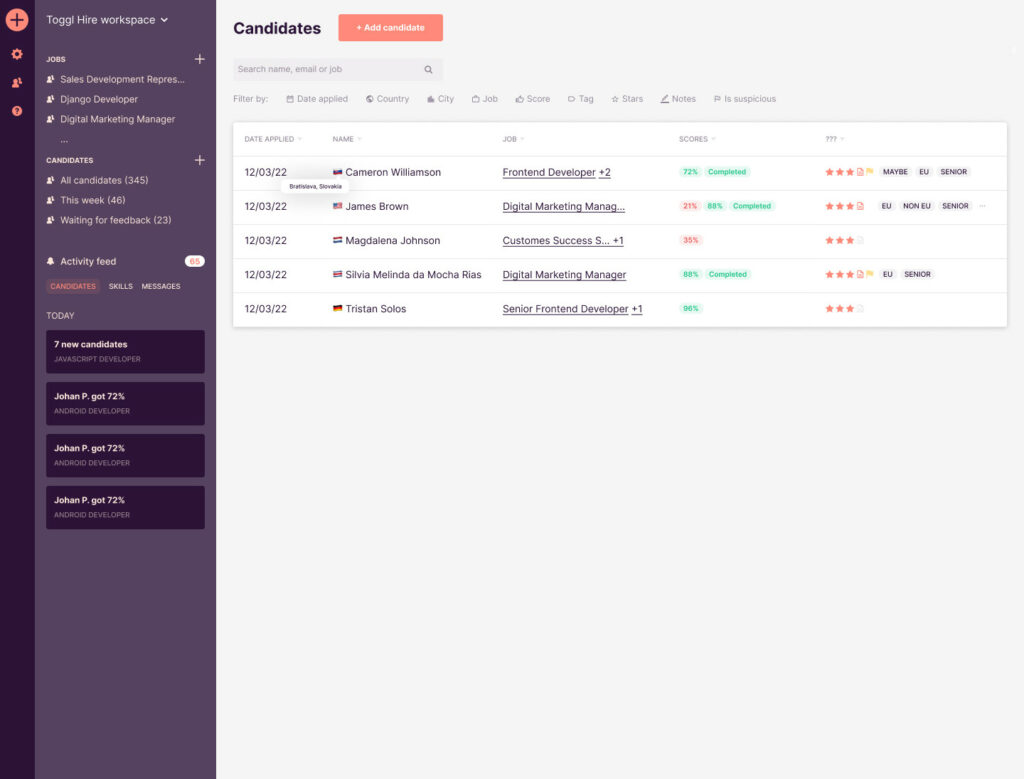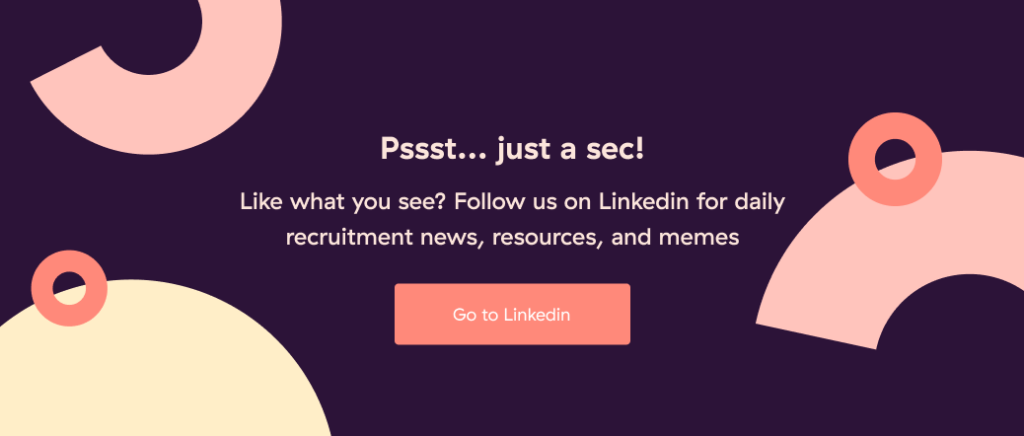Does your recruitment strategy boil down to posting a job ad and praying for the perfect candidate to apply? There are many recruitment strategies out there, but post and pray is by far the worst one. Want some better recruiting strategy ideas?
In this article, we look at 11 of the best recruitment strategies for 2023.
If you want to fill more positions, get more qualified candidates, and decrease your time to hire, read on to find out how!
Quick Jump Links for the Best Recruitment Strategies:
#1 – Work on Your Employer Brand
#2 – Create an Employee Referral Program
#3 – Make Data-Driven Hiring Decisions
#4 – Innovate Your Recruitment Process
#5 – Become Visible to Passive Candidates
#6 – Diversity Recruitment Strategy First
#7 – Go Digital-by-Default
#8 – Revamp Your Interview Process
#9 – Create a Talent Pool
#10 – Nurture Previous Employees
#11 – Host Industry Events
But first, what is a good example of a recruitment strategy?
A recruitment strategy is a well-defined hiring plan that outlines what approach an organization chooses to attract, evaluate and hire people to fill their open positions.
To choose the best recruiting strategy, a company must clearly identify its strengths and weaknesses – which parts of the recruitment funnel are working and which need improvement. A good example of a recruitment strategy could be campus hiring. An organization that has a clear growth plan and a specific profile of an employee for hard-to-fill roles could choose to acquire talent early in their career – it’s a less competitive market but one that’s relatively easy to target!
Now, think about the root cause of your hiring struggles and pick the best-fit approach from these 11 tried-and-trusted recruitment strategies!
1. Work on Your Employer Brand
No one said nailing your recruitment strategy will be easy, so let’s start with the most elusive one.
Employer branding is perhaps the most important element in attracting, hiring, and retaining great talent. In fact, 72% of recruitment leaders agree that it has a significant impact on hiring success.
Why is that? Put simply, your employer brand is what makes people want to work with you and for you. Think about companies like Apple, Nike, and Netflix. They have a clear mission, identity, and tone of voice that helps them stand out as industry leaders.
Note! While employee value proposition is the promise you make to potential candidates in return for their commitment to your company, employer branding encompasses a lot more than that! Everything from compelling job descriptions to the perceived company culture and employee referral program falls under the employer brand. Learn more about the difference between employer branding and EVP to get this recruitment strategy right.
Creating a kickass employer brand isn’t something you’ll be able to do alone. As a recruiter, you’ll need to engage with other departments, such as marketing and communications, to build a brand that candidates want to work for.
Create a desirable employer brand, and we promise you that attracting great candidates becomes a whole lot easier!
How can you implement this recruitment strategy? – Check out our guide to employer branding to create the foundation for your other recruitment strategies to build from.
2. Create an Employee Referal Program
In 2023, employee referral programs aren’t new news, but getting them right is still tricky.
Asking your current employees to refer great people from their network is an easy way to connect with outstanding talent. And what makes this recruitment strategy so sought-after is that it’s free!
Employee referrals are one of the best recruitment strategies because:
- Referred candidates have lower turnover rates
- They’re better quality hires
- They help reduce your time to hire
- They’re cost-effective for sourcing
The trick with employee referral programs is to strike a balance between incentivization and quality. You want your staff to actively refer people from their network, but not their low-quality connections.
But the good news is, building employee referral programs is quick, low-cost, and delivers qualified candidates fast! No wonder it’s one of the favorite recruitment strategies among technical recruiters.
How can you implement this recruitment strategy? – Learn more about employee referral programs here. If you like learning through video, give this a watch too!
3. Make Data-Driven Hiring Decisions
Whether you’re using an ATS (applicant tracking system) or not, hiring great candidates needs to be a data-driven exercise. You can’t manage what you don’t measure – and in a hiring process, there’s a lot to measure!
Collecting, reporting, and analyzing data stretches across all of our recruitment strategies and will help you measure your success over time.
Some of the most important recruitment metrics to track include:
- Application completion rate
- Qualified candidate rate
- Cost of hire
- Time to hire
- Candidate response rate
- And many others in our recruiting metrics guide.

For example… Let’s say you bet on diversity recruiting as your go-to recruitment strategy this year. Unless you bake data tracking and monitoring into your hiring process, how will you ever be able to compare this new hiring strategy to the conventional recruiting methods? Plan ahead. Agree on the metrics before implementing a new recruiting strategy, then optimize your recruitment efforts accordingly.
For instance, tracking the best candidate sources will help you decide where to place job postings or which job fairs to attend. While monitoring the candidate experience will indicate which steps in the hiring process need tweaking.
Analyzing recruitment data will help you identify which recruitment strategies perform well, and which need updating, within your department. If you’ve struggled to capture data in the past, we’d recommend making your processes more digital by using remote hiring tools.
How can you implement this recruitment strategy? – Dive into our recruiting metrics guide to understand what you should be tracking. Plus, there’s a free template in there to help you get started straight away!
4. Innovate Your Recruitment Process
It’s not uncommon for some companies to get several hundred applicants per job role. That’s a lot of applicants, definitely too many for one recruitment professional to handle alone.
And it’s no secret that the more applicants you receive, the higher the chances of letting great potential candidates slip through the cracks.
On the other hand, a good number of companies struggle to source qualified candidates for their open roles. This could be the result of many factors: wrong recruitment strategy, poor job ads, unappealing careers page, no referral program, bad company culture, invisible to job seekers… the list goes on.
The curious thing is that, in both cases, the traditional recruitment process is most likely to blame.
Let’s unpack this.
- A large volume of applications. Old-school recruitment practices, such as manual CV screening and phone screen interviews, burden the recruiting team with unnecessary work and create artificial barriers for suitable candidates. At these volumes, the traditional recruitment process doesn’t work, you need to innovate to hire more efficiently.
- Outdated hiring process. Practices like requiring a tailored CV and a cover letter, putting candidates through endless rounds of interviews, or providing a poor candidate experience push qualified talent away.
The younger generation – trained by highly personalized, entertaining consumer experiences (think TikTok, Netflix, Airbnb) – holds radically different expectations for a modern hiring process. In contrast to any other daily experience of digital natives, the traditional recruitment process feels like a relic of the past.
So what does an innovative recruitment process look like?
| Traditional Hiring Process: 4-6 weeks | The Modern Recruiting Process: 2-3 weeks |
| Apply via a tailored CV + Cover Letter | Apply via a quiz-like skills test – instant feedback via skills test results |
| Take a recruiter’s screening call | Complete an asynchronous video interview with optional re-records |
| Attend the first intro call with a hiring manager | Attend an intro interview with the hiring manager |
| Take on a homework assignment | Accept a take-home assignment |
| Attend the second interview and present your work | Attend a peer interview |
| Culture fit or Peer interview | Take a Paid test project |
| Offer, Rejection, or Ghosted 👻 | Offer or Rejection |
Introducing hiring tests into your recruitment strategy brings forward immense benefits:
- gamified application experience helps to attract top talent
- improved hiring speed due to automation and data-driven decisions
- reduced unconscious bias that results in more diverse talent
- better quality candidates at every stage of the pipeline
- excellent candidate experience with minimal effort
- alignment of the hiring team and confident hiring managers
This sort of recruitment innovation is great for candidates too, as it provides a more exciting way to showcase their talents and gives them instant feedback.
How can you implement this recruitment strategy? – Watch the video below to see why skills assessments is one of the most effective recruitment strategies in the modern recruiting world.
5. Become Visible to Passive Candidates
Here’s a discouraging statistic – top talent is gone from the job market in less than 10 days. That means that you have to hire quickly, at the right time, and make an offer fast.
There is some good news, though – there’s no lack of passive candidates. According to research, 70% of the world’s talent sits in the passive market, just waiting to be made aware of better opportunities.
Given passive candidates aren’t actively looking for new roles, you aren’t going to engage with them on job boards. Instead, you need to adopt a long-term talent acquisition philosophy.
Talent acquisition focuses on the long-term visibility, awareness, and appeal of your organization. By building up all of these factors, your objective is to get seen by passive talent way before they’re looking for a new role. Because when they are eventually on the market, they’ll think of you!
How can you implement this recruitment strategy? – Read our full guide to Talent Acquisition and start devising a strategy for targeting passive candidates.
6. Diversity Recruitment Strategy First: Use Niche Job Boards
You have to fish where the fish are. In recruitment, this means going to the right places to find your ideal candidates.
Niche job boards are job boards specializing in a particular sector, field, or skill set. They see less traffic than big websites such as Indeed or LinkedIn, but they let you fish for exactly the fish you want.
Here are some examples of niche job boards for certain roles:
- For Startups, try fishing on AngelList, VentureLoop, and Startupers
- If you’re a fully remote company, post your ads on WeWorkRemotely, NoDesk, Remote.co, or Remotive.com
- If it’s the Developers you’re after, we’d recommend Stack Overflow, Dice, and CrunchBoard.
This is one of the easiest recruitment strategies for you to implement, so there are no excuses to not change up your job boards.
How can you implement this recruitment strategy? – Get on Google and start searching for job boards tailored to your niche. Simply search for ‘your role’ + job boards – for example ‘marketing + job boards‘.
7. Go Digital-by-Default
The recruitment industry has changed so much in the past 10 years. The rise of digital technology and social media has fundamentally changed the way candidates and recruiters interact.
Here are some stats to back this up:
- 79% of job seekers have used social media in their job search in the last year.
- 81% of job seekers want more job opportunities listed on Facebook.
- Candidate application rates increase 34% when the job postings include a video.
It’s clear to see that the use of digital hiring strategies and social media helps recruiters find, engage and acquire the best talent on the market. If you aren’t already, everything you do should be digital-by-default to ensure you’re operating in the candidate’s world.
If you want to break into the video space, check out our latest feature, Video Intros, below!
8. Revamp Your Interview Process
Interviews are one of the most crucial stages of the recruitment process. Not only do they require a high time investment, but they are also your chance to see how candidates perform face-to-face and how they align with your culture.
Despite this, the interview process can be pretty negative for employers and candidates. For recruiters, the interview process can take up to 27.5 days to complete with candidates 39% less likely to take a role if the interview experience is negative.

Here are five quick-fire ways to make interviews more effective:
- Move to asynchronous interviews where possible to save time and boost candidate experience.
- Use best-practice to conduct your virtual interviews as fairly as possible, including removing interviewer bias and boosting diversity.
- Show your candidates you want them to succeed by sharing interview tips and commonly asked questions as part of your interview invitation!
- Understand the difference between Structured vs Unstructured interviews and how to use them effectively.
- Reassess your organizational fit interview: are you employing the best peer interviewing practices?
How can you implement this recruitment strategy? – We’d recommend reading up on different interview practices as well as standardizing your interview process with lists of pre-selected interview questions.
Check out our top lists of
– interview questions for managers
– soft skills interview questions
– behavioral interview questions
– unique pre-screening interview questions
– C programming interview questions
– product owner interview questions
– data analyst interview questions
– Bonus: icebreaker questions
9. Create a Talent Pool
In the world of recruitment, the hardest thing to do is to source great candidates with the skills and experience you need. The best way to have a list of vetted candidates on standby is to build up a high-quality talent pool.

But don’t be confused, a great talent pool isn’t just a list of names and phone numbers. A properly curated talent pool provides rich information on each potential candidate, including their:
- Experience
- Hard & soft skills
- Attributes
- Career goals
- Cultural fit to your organization
- Suitable roles
If you’re going to implement any long-term recruitment strategies, building a talent pool is one we’d definitely recommend. Not only will it boost your speed to hire, but it will also reduce costs and help keep candidates engaged with your business.
How can you implement this recruitment strategy? – Do some research on how to build a great talent pool here. Then start putting the techniques into action, starting with reaching out to previous candidates.
10. Nurture Previous Employees
Leading on from the talent pool nicely, one of the most forgotten-about recruitment strategies involves employees who have actually left your business.
So, on the face of it, hiring someone who used to work for you may not sound like a terrific idea, but hear us out. If the employee left on good terms, they may be perfect for their old role, a different role, or a new role higher up in your business.
Previous employees have the perfect blend of knowing your company well alongside the new skills, knowledge, and experiences gained from other organizations. In addition, you’ll also spend less time onboarding and significantly reduce your time to hire.
How can you implement this recruitment strategy? – Weigh up the pros and cons of hiring ex-employees by reading this guide. Then, start to embed a ‘previous employee catchup’ into your employee exit process.

11. Host Industry Events
Hook up with your company events team and start planning some ways to raise your profile within your industry. Don’t make these events recruitment focused, instead bring value to your network and position your business as an exciting and innovative place to work.
If you’re in tech, this could be a hackathon. For the arts industry, try hosting an exhibition. Or, go for a conference, if you’re in marketing. It could even be as simple as hosting a webinar on an industry hot topic – or a virtual job fair.
From a recruitment perspective, it’s a great way to synergize with several other recruitment strategies. Events help raise your employer brand, plant the seed with passive candidates, and is an opportunity to build a talent pool.
Find out how Telia used skills assessments at a student campus event to source talented candidates and build a qualified talent pool.
How can you implement this recruitment strategy? – Start with Hootsuite’s awesome guide on how to host your own virtual events. These ideas offer a quick, easy, and low-cost way to start boosting your business profile and meet future candidates.
The best recruitment strategies: wrapping up
The recruitment market was fiercely competitive in 2022. It might ease up a little bit in 2023, but recruiting top talent will still be challenging.
If you want to fill more positions, get better quality candidates, and decrease your time to hire, these 11 effective recruitment strategies offer some easy-to-implement ideas.
We recommend trying them out in your business to see which ones work for your industry and candidate base. Remember that the ultimate key to a successful recruiting strategy is creating a slick and efficient hiring process, something we’re passionate about with Toggl Hire’s skills testing.
Juste loves investigating through writing. A copywriter by trade, she spent the last ten years in startups, telling stories and building marketing teams. She works at Toggl Hire and writes about how businesses can recruit really great people.





